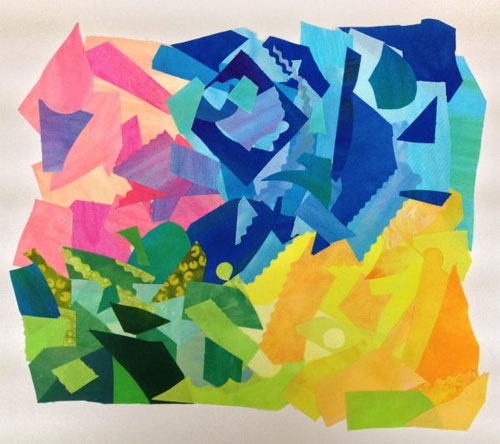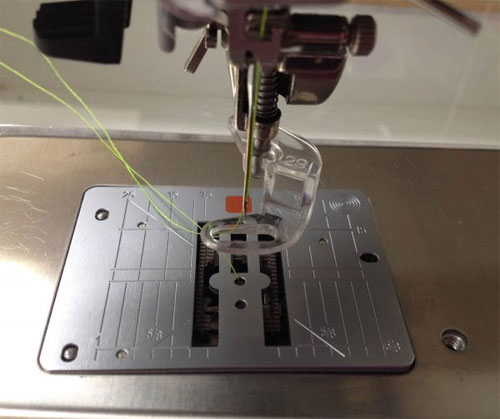It is said that a single seed may lead to a thousand forests. While making Seedpods #1, I reflected upon how a simple act can change the world, and how one word of kindness can plant the seed for a lifetime of happiness.
Creating Seedpods #1 was so engrossing I never considered which way to hang the design. Should it go horizontally or vertically? The orientation may depend upon the space where it is on display and how you feel about the design.
So I’ve come up with a solution for art quilts of this disposition. Hang it two ways!
It requires two hanging sleeves on the back. One sleeve is for a rod to hang it in a horizontal position. The second sleeve is used to hang it vertically.
 Here’s how I hand stitch them to the back of the quilts. See that miter at the corner where the two sleeves meet? Now a rod can slip into either sleeve and change the orientation.
Here’s how I hand stitch them to the back of the quilts. See that miter at the corner where the two sleeves meet? Now a rod can slip into either sleeve and change the orientation.
Read more about Seedpods #1 here if you’d like to add this versatile artwork to your collection.







